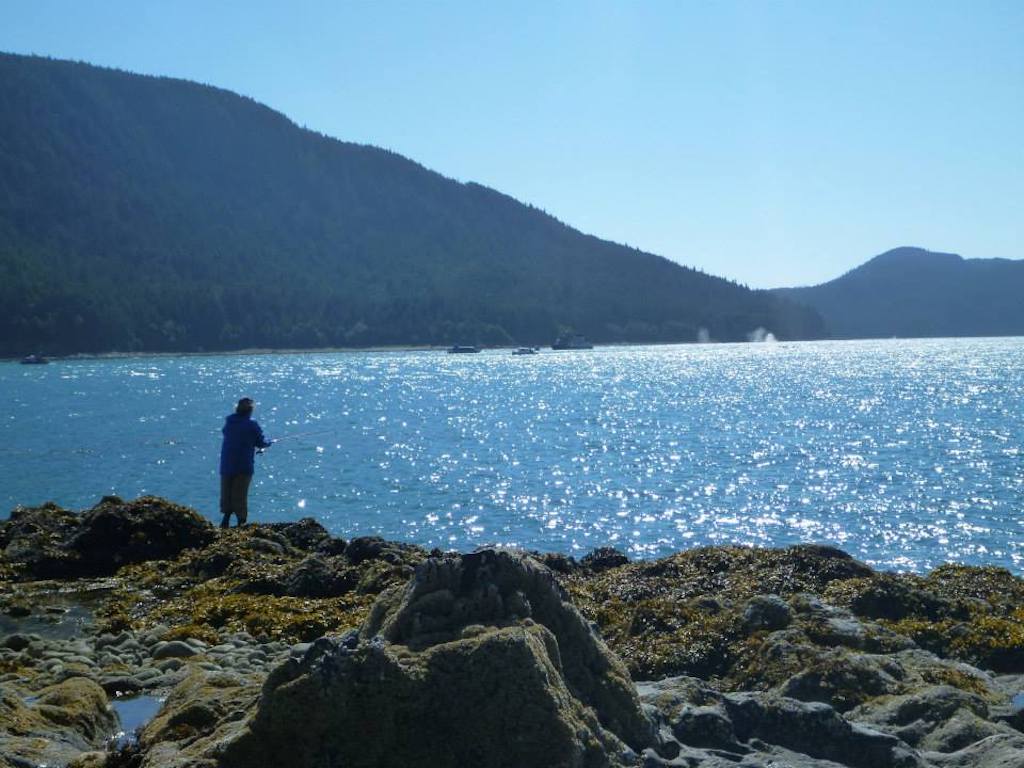
Posts may contain links to products and services I love. I may make a small commission from them, at no extra cost to you. Thank you for supporting my blog.
Fish Tales from My Life of Outdoor Adventure
While I don’t fish at home, I usually bring a fishing pole when I go to remote places. There’s something about procuring my own food in the wilds. Being responsible for reeling in, killing, cleaning, and cooking a fish is a cycle seldom found in the front country. And who doesn’t like free food?
Except it’s really not free. I bought a new fishing rod for a sea kayaking trip in Alaska. I visited the sporting goods store in Juneau so the salesman could sell me the perfect lure for the pink salmon in season at the time. Then, there was the fishing license, which in Alaska is quite steep. So, I opted for the one-day license and chose my fishing date.
Day 3 of the trip was the chosen time. I had splurged for a Forest Service Cabin on a remote island cove to stay in the night before my fishing day. As my daughter slept in, I headed out into the cove in my kayak. The water was so clear that I would see dozens of pink-streaked salmon in the shallows around my boat.
I could barely contain my excitement as I cast my special lure into a group of salmon. Nothing. Cast again, no hits again. Finally, after half an hour of fruitless casting, I decided to dangle the lure in front of one of the salmon I could see below my cockpit. I was like a kid bobbing a pole in a carnival kiddie pool trying to catch a rubber duck.
Unorthodox? Yes, but it worked. I had a salmon fighting on my line in under a minute. But landing a fish in a kayak is a challenge at best. I had learned that lesson a few years earlier.
Lake Superior Fish Tales
I flashed back to a time kayak fishing off the north shore of Lake Superior. I hooked a lake trout so big that I thought I had snagged a log. When I reeled the “log” next to my boat to retrieve the lure, I looked down and saw a fish as long as my leg. There was no way that fish was coming into my cockpit.
A group of teenage boys on an Outward Bound hiking course were the only people we had seen for a week in the wilds of Pukaskwa National Park. Fortuitously, the boys happened to be down by the shore watching me.
I saw them, squeezed the fishing pole between my thighs, and paddled furiously for the beach. “Does anyone know how to land a fish?” I yelled. One lad waded out, and I shoved the pole in his hands. After I jumped out of my kayak, the whole group of us got the behemoth fish to shore. I gave the boys half the fish, and kept half for my partner and me. It was enough for many delectable meals of trout steaks for everyone.
Related post -> Sea Kayak Camping on the Islands of the Maine Coast
Back to Alaska Fish Tales
So, I was in the same predicament in Alaska with a hefty fish on the line. Except this time, after playing the fish for a couple of seconds, the pole snapped. With half a fishing pole in one hand, I grabbed the filament line with the other. I was not losing this catch.
I wound the nylon around my wrist, grabbed my paddle, and hurtled my boat toward shore. At the same time, I shouted for my daughter. As I beached the kayak, I saw her nonchalantly stroll toward me in her PJs.
“Help me with the fish”, I called out. She acquiesced to take the fishing line while I clambered out of my cockpit. “Keep it tight or we’ll lose it”, I said, implying that she should keep playing the salmon. But to Amelia, that meant running up the shore holding the line with the salmon bouncing along behind her on the pebbled beach. Well, I guess that’s one way to land a fish.
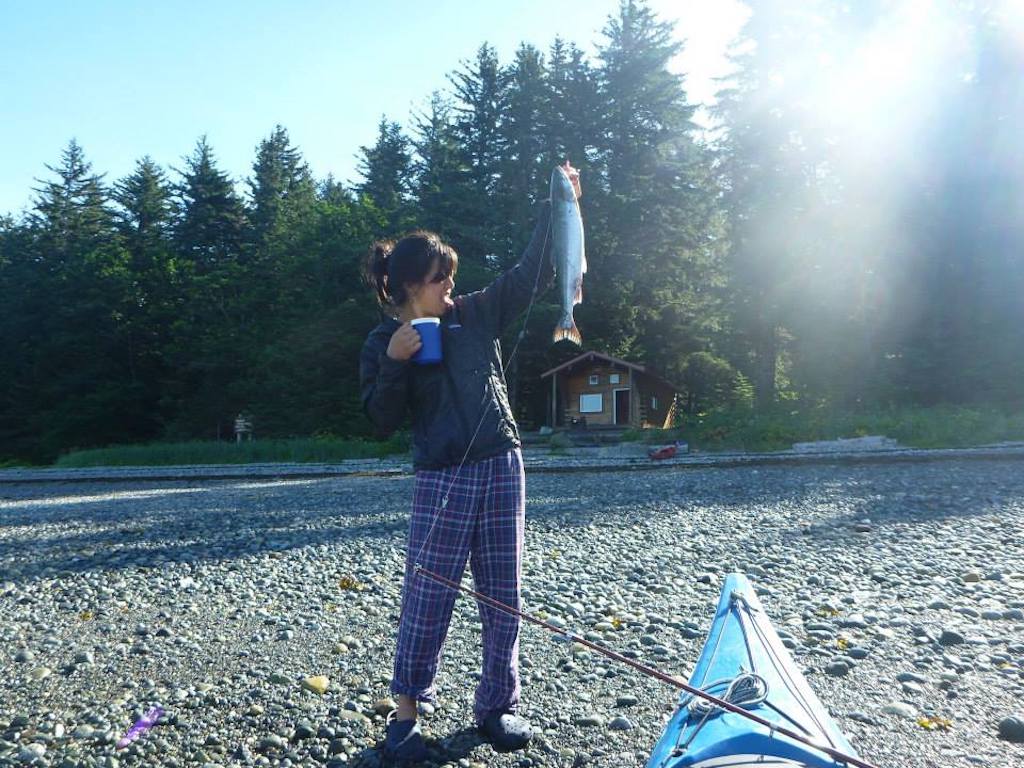
Alaskan Salmon Processing Fish Tales
Cleaning the catch was a cinch. I relied on the skills I had gained 35 years earlier while working on a sockeye salmon processing ship in the Bering Sea in Alaska. Mine you, I never planned on working in a salmon cannery. I had driven the Alaska Highway with my friend Nancy from Michigan to Alaska. It was quite an adventure in her compact car on a road with potholes so big they would swallow the car if we ventured too close.
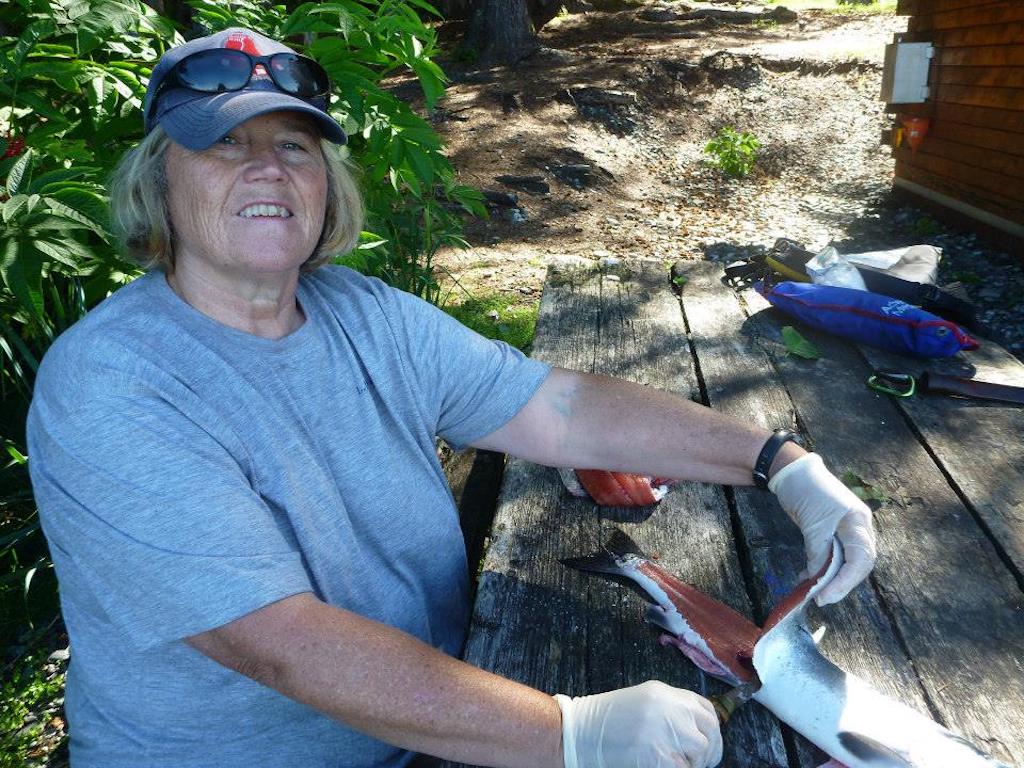
When we arrived in Fairbanks, Nancy decided she didn’t have enough money for her car payment. She had seen a poster for salmon cannery jobs and said she was signing up. But I didn’t really have a choice. What was I going to do stranded in Fairbanks while she cut open fish?
We watched a video about the salmon industry in Alaska at the employment office, then hopped on a plane to Bristol Bay. Soon, we were in a Native village in the far north, waiting for the old World War II landing craft to take us to work in the huge blue shoebox floating in the ocean.
Life in a Salmon Processing Barge
The two weeks I spent there were a master class on cleaning a salmon. Twelve people along the sides of a long stainless steel table processed hundreds of pounds of salmon every two-hour stint. I was dressed in my woolies, covered with a heavy-duty apron, rubber boots, rubber gloves covered with cloth gloves, and waterproof arm sleeves to protect me from the slime.
There were coveted jobs on the line. Chopping off the heads of the fish, slicing them open, and ripping out the guts were the preferred jobs. Workers with less clout scraped the bloodline out or washed them at the end of the line. I was a washer who pulled the rinsed salmon from the tank. I decided if they were good enough to go down the chute to the freezer or into the bin destined for the cannery. All the rotten, putrid fish made their way to the cannery bin.
All the while, salmon kept coming down the line, reminiscent of the famous I Love Lucy episode in the candy factory where Lucy started eating chocolates to keep up. Except we couldn’t swallow the fish if they backed up at our station. There was frequent frenetic yelling to hurry up.
Break Time
Finally, after two hours, we were ankle deep in salmon guts and covered with slime. We stumbled into the break room. Most times, I was too tired to take all the protective covering off for the fifteen-minute break. I tried to keep the salmon goop off the snack I opened with my teeth. I pitied my co-workers who had to smoke a cigarette with slimy fingers.
The bell rang us back to our stations for another shift of salmon processing. We worked for the overtime pay. After eight grueling hours, dollar signs danced in our heads for the next four hours because they paid time and a half. When our 12 hours of processing salmon ended, Nancy and I boarded the troop carrier back to shore. Most workers slept on the boat, but we were temporary staff, so we had to burn precious sleep time commuting to our onshore rooms. However, that gave us another 4 hours to get triple overtime by working in the Egg House in the village. When you are in your twenties, sleep is overrated.
The Egg House
The Egg House was where the prized salmon roe was meticulously packed in wooden boxes destined for Japanese fine-dining restaurants. Elderly Japanese men tried to teach us the fine art of weaving salmon roe into fen shu perfection. After a 12-hour shift standing in salmon entrails, I can’t say I was a good student.
Finally, after two weeks of 16-hour days of slicing fish and braiding roe, we signed up for the first layoff. Nancy had her car payment, I had enough money to pay for the whole summer in Alaska. I also had the resolve to avoid ever eating a can of salmon, since I was privy to the rotten fish that filled the cannery bins. But I did learn how to clean a salmon.
Related post -> Amazing 10-day Sea Kayaking Trip in Baja
A Fish Feeding Extravaganza in Alaska
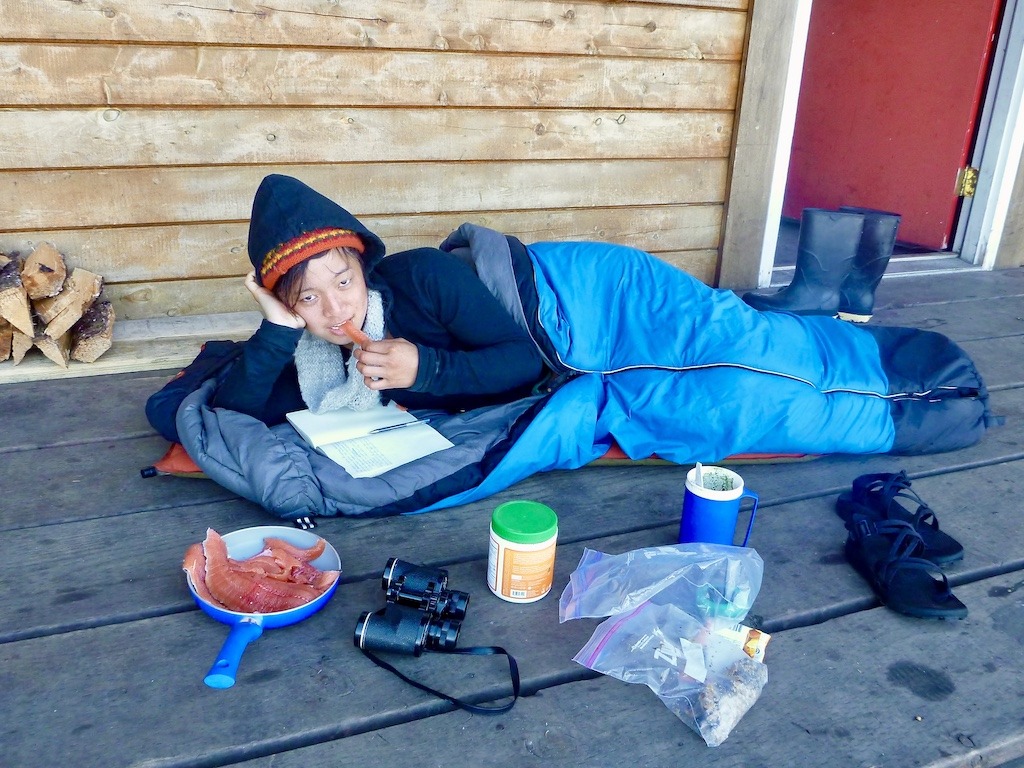
By cleaning the salmon I caught, I got to work all the jobs on that salmon processing line from years before. Then, I cooked some beautiful filets for breakfast. However, Amelia was more interested in eating it raw. Who can blame her? It was the freshest sashimi we would ever have.
Fish Tales Wrap Up
People who fish can’t resist telling a good fish story. I have many more fish tales to share, but I’ll leave it at these. Some day, I’ll tell you about pulling in a pike for dinner in northern Quebec on a pole I fashioned out of a spruce bough. Or a canoe trip to James Bay, where our planned menu depended on catching fish. While our food supply dwindled, we realized our angling skills needed to improve or we were going hungry. Or the time I grabbed trout out of a stream in the Wyoming Rockies with my hands.
Oh, don’t get me started again. Meet me around a campfire sometime, and we can swap many more fish tales.
Related post -> My Stories from the Field: Sea Kayaking with Whales in Alaska
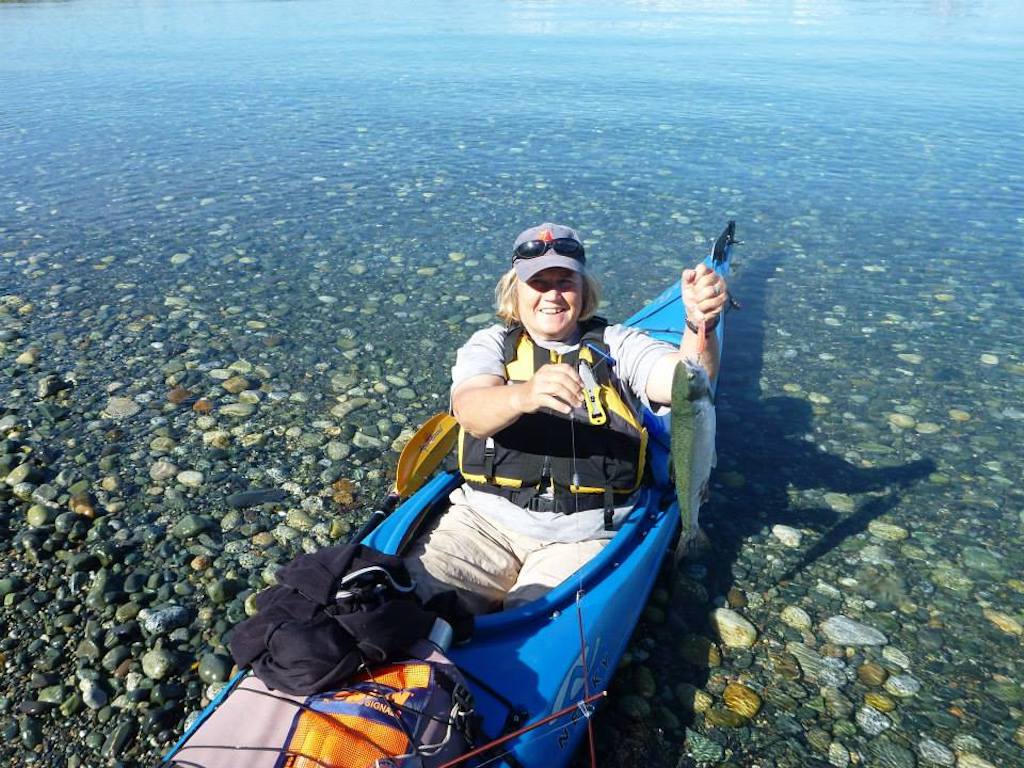
Related post -> Sea Kayaking with Humpback Whales in Maui
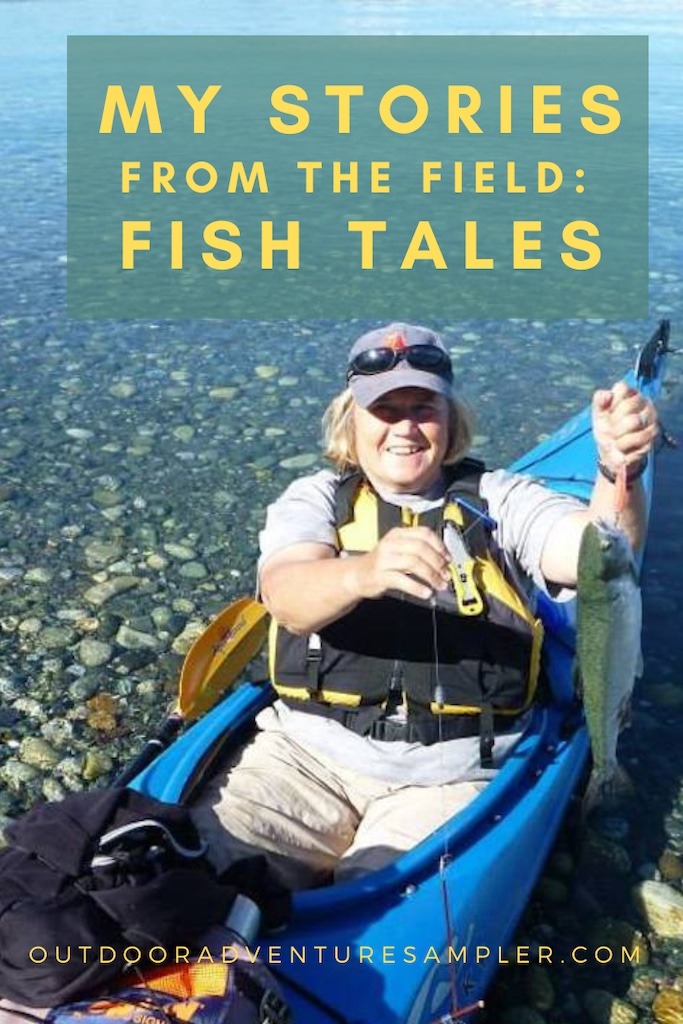
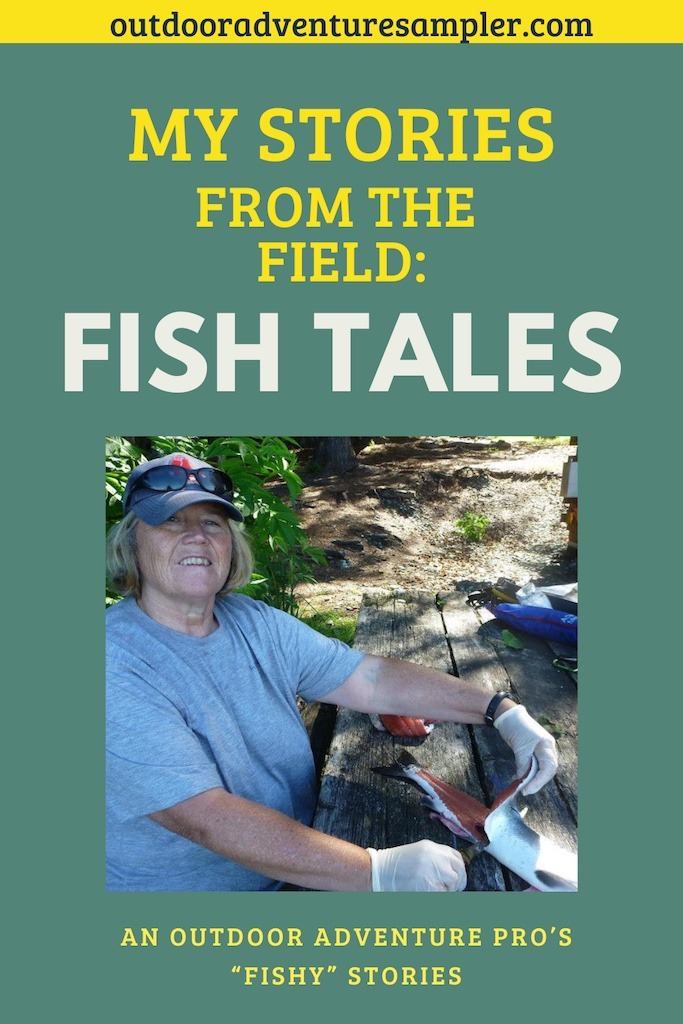
Related post -> Sea Kayaking in the Whitsunday Islands in Australia
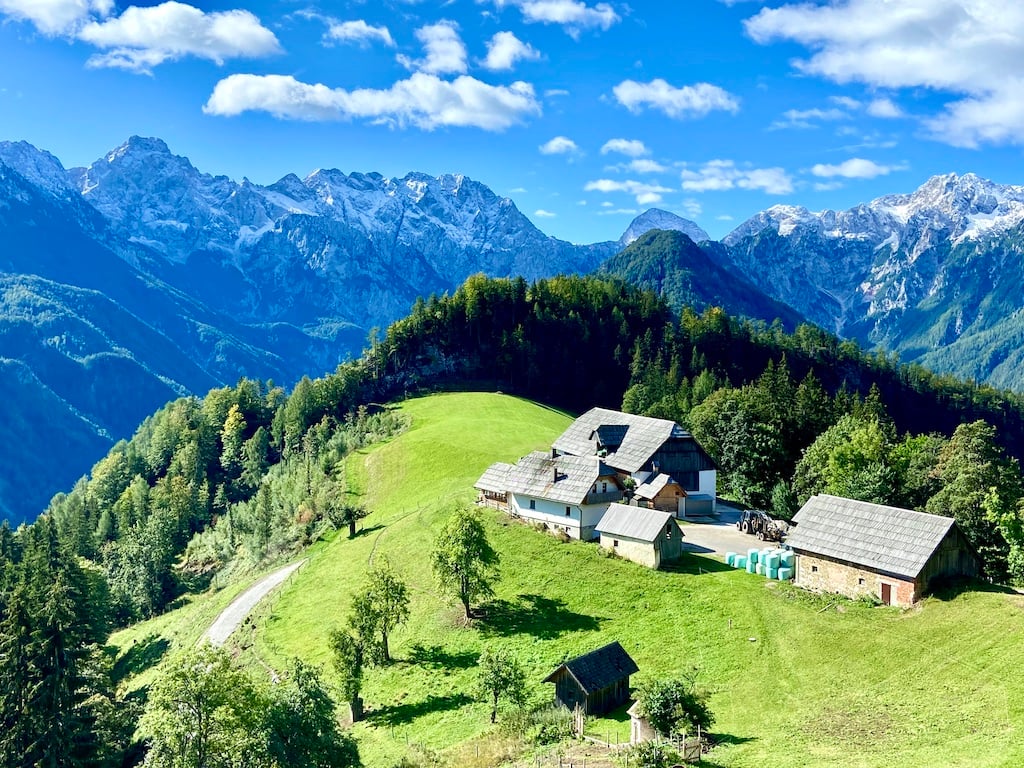
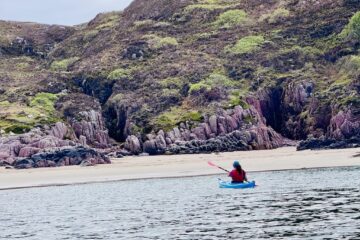
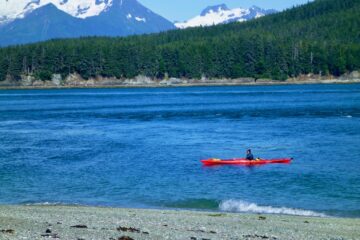
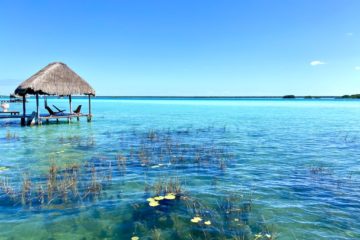
9 Comments
Kelly · April 2, 2025 at 8:33 pm
Ha ha. I can just picture Amelia running down the beach with the salmon in tow. I always love to hear a good fish story.
Her Asian Adventures · April 3, 2025 at 2:44 am
Have I ever fished in my life? no. Did I just read the whole post? Absolutely! Honestly I really enjoyed reading it and can´t wait to try it!
Karen · April 24, 2025 at 5:09 pm
I hope you get a chance to try fishing and actually catch something.
Josy A · April 3, 2025 at 2:45 pm
This is a world I know very little about! I tried fishing when I was a child, but I have never given it a go in Alaska or Canada. I am sort of envious of the time in the cannery – you must be really good at processing fish now!
Anyway, you’re making me think I need to give fishing a try – hopefully with a guide. 😀
p.s. I love the photo of Amelia landing a salmon in her jammies!!
Karen · April 24, 2025 at 5:07 pm
I do rely on all that I learned in the cannery when I need to clean a fish in the wild.
Em · April 7, 2025 at 1:18 am
I’m so glad you didn’t lose the fish!
Sue · April 7, 2025 at 7:40 pm
Very fun to read these as one piece. Even though I know all the stories, the way you put them together made them seem new and was a lot of fun to read.
Hazel · April 24, 2025 at 8:04 am
Hi! I am so proud of you (yes, that’s the emotion) and inspired by your survivalism. I see your mention about making a fish pole out of a tree bough- what other weird survivalist back-to-nature stuff have you adapted or made? I’m taking my first big trip soon, God-willing, and am on a tight budget. I’m worried I won’t be able to survive on my own and what will I do if I don’t have something I need or something breaks. It’s really inspiring to see how you dealt with the challenges and how you did them alone. Thank you for sharing your stories!
Karen · April 24, 2025 at 5:05 pm
Thanks for your comment. I really think for the most part we are fine when we go outdoors. I don’t look at it as survival but more as interacting with nature. We can figure it out if things go amiss. Just be prepared with the basics and a little ingenuity and nature is very forgiving.
I always bring a small repair kit so I can fix things. I also have learned a lot about wild edibles which even though I don’t use them for survival, it’s nice to know what you can and can’t eat.
I hope you really enjoy your time out in the natural world.